Should You Press Clothes Before Storing?

These days, it seems like more and more properties disappoint us when it comes to storage space. If your wardrobe seems to be boiling over, storing your clothes is a great way to save room in your closet. Whether you want to store your summer clothes in the winter or your winter clothes in the summer, there are many awesome storage facilities available to choose from. Or, maybe you are lucky enough to have an attic or garage to keep extra clothing in.
Either way, it's important to know how to store your clothes properly to prevent damage and ensure that everything comes out looking great! Plus, proper clothing storage can help you keep high-quality garments protected while simultaneously allowing you to get more organized. And who doesn't need a little more organization in their day-to-day lives?
With that being said, if you will be taking time out of your busy schedule to prepare your garments for storage, you might as well do things properly. When you take a few extra steps to ensure you are storing things correctly, you'll be able to keep your clothes in pristine condition. That kind of foresight will really come in handy when you need to access an outfit later!
This brings us to the question: Should you press clothes before storing them?
That’s just what we are here to discuss. As a bonus, we are also going to go over some other helpful subjects like the difference between pressing and ironing your attire, how to store clothes safely, and keeping your best duds protected from pests like Clothes Moths. So, read on to find out whether you should press your clothes before they go into storage and so much more!
Should You Press Clothes Before Storage? The Quick Answer is Yes.
Ironing out your clothes before you store them is smart because it gets rid of wrinkles and helps to ensure that certain types of bacteria are eliminated. To be clear, pressing clothes involves ironing specific spots using a pressing technique or using a clothing press. Steam ironing is another good option if you own a steamer tool.
Overall, ironing out your clothes before storage makes them look good, kills bacteria, and can also help you prevent pests from taking up residency. So, should you use a pressing iron for clothes before storing them? We say yes!
As you can guess, there's a lot more to say on the subject. From pressing vs ironing to dry cleaning and protecting clothes, there are lots of savvy ways to keep your clothes looking and feeling awesome after storage. You’ve also got to think about pre-washing, material types, plastic containers, fragrance infusions, humidity, storage locations, and more. So, keep reading to become a clothes storage pro!
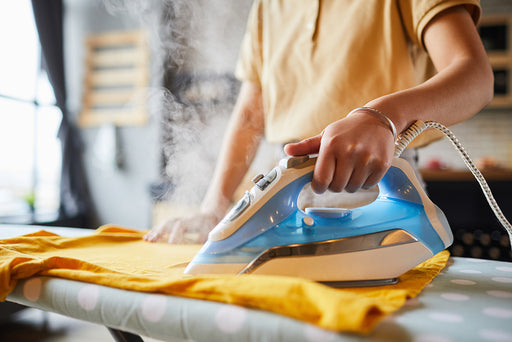
All About Pressing Your Clothes: Garment Storage at a Glance
High-quality materials like leather, fur, wool, suede, velvet, and silk are definitely worth taking care of meticulously. Although, keeping your favorite jumpers, dresses, and denim wear in pristine condition is also well worth the effort. No matter what garments you are stowing away, knowing how to properly keep and care for everything is a pretty important life skill! So what are the main measures to take when tending to your clothes before they go into storage? We've broken things down into four simple steps.
1. Get the Right Tools for the Job
Although for some, storing clothes means tossing everything into a plastic container and putting it in the attic, we recommend doing things the right way. This means having the right gear on hand for the task ahead.
A few of the things you need to properly store your finery and favorite clothing items may include:
- Plastic Storage Containers or Vacuum-Sealed Garment Bags
- A Washing Machine with Laundry Detergent, Bleach, and/or Vinegar
- An Iron, Spray Bottle, and Ironing Board or a Steamer Tool
Optional Items:
- Clothes Moth Traps
- Herbal Sachets
- Acid-Free Tissue Paper
- Baking Soda
2. Make Sure Everything is Ironed, Clean, and Pristine
The first thing to do when preparing your clothes for storage (whether in the long or short-term) is to clean them and prepare everything properly. There are many reasons to clean your clothes before storing them. For one thing, cleaning your clothes helps to remove odors, dirt, and bacteria. Over time, these substances can cause unpleasant effects on clothes, especially in humid climates! Also female Clothes Moths will lay their eggs on fabrics that are soiled with stains such as sweat and blood, as this provides a food source for when the hungry larvae hatch.
You can either wash your clothes in the machine with hot water and laundry detergent or hand launder them in cool or lukewarm water depending on the care label.
With that being said, some clothes can not be cleaned in a standard washing machine or go near water. If your clothing cannot be washed using water and laundry detergent, consider having things dry-cleaned. For fur, suede, leather items, silk, and other high-quality garments, a trip to the dry cleaners is the best way to remove any grit or grime from clothes and can be well worth the money. Remember, never store soiled clothing! This can attract pests such as Clothes Moths and cause all kinds of issues in the long run.

Iron or Press to Ensure Everything Maintains Its Shape Properly
After thoroughly cleaning all of the items of clothing that you want to store, it's time to get out your iron and ironing board. Or, you can use a steamer if you have one. Ironing items of clothing helps to get rid of bacteria and will keep everything looking great. Taking the time to iron the clothing that you want to store can also help prevent pests like moths. This is because the iron reaches high temperatures, removing any hidden moth eggs from your clothes.
3. Use Protective Measures to Keep Clothing In Good Condition
Nothing is more frustrating than getting items out of storage only to find that they have become damaged, smell bad, or are simply unwearable. As such, it is important to take the proper protective measures to keep your clothes fresh.
After washing, ironing, and placing your clothing items into the storage containers of your choice, it's time to take a few final preventative protection measures. These extra steps help to keep pests away and ensure that your clothes come out looking great!
Hang Pheromone Clothes Moth Traps
At MothPrevention we always advise using Pheromone Clothes Moth Traps designed to attract and trap the male clothes moth - preventing them from breeding with the female clothes moth. This prevents your clothes from becoming infested with clothes moth larvae whilst they sit in storage.
Even if your clothes are clean and pristine, the keratin (a protein) in your cashmere, wool and other natural fiber garments are a buffet for active clothes moth larvae.
Be sure to replace your clothes moth traps when the pheromones have lost their effectiveness. MothDefense Clothes Moth Traps have a 3 month / 12 week lifespan.
Think About Using Acid-Free Tissue Paper
Also, you may want to consider lining your clothes with acid-free parchment or tissue paper. This helps to keep your creases in place and can prevent dye transfer. Additionally, these sheets of paper help keep moisture at bay. Mildew is an enemy of stored clothing. Just be sure that the paper you choose is completely acid-free. Otherwise, clothes stored for a long time may start to merge with the paper, causing damage.
Baking Soda Can Help
Finally, you might want to consider leaving a box of baking soda in or near your stored items. Baking soda is extremely porous and naturally absorbs odors. It also helps to keep areas dry. This is why you find boxes of baking soda in refrigerators that are not being used frequently.
You Could Use Herbal Sachets...
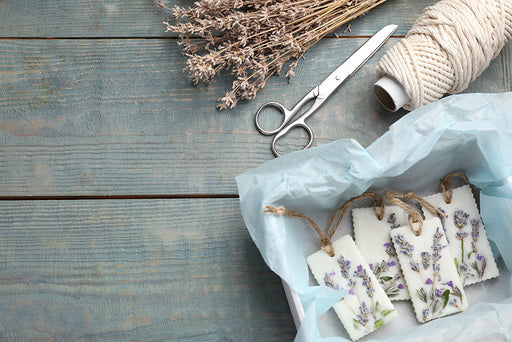
Much clothes storage guidance out there recommends preparing herbal moth-deterrent sachets to place in with your clothes. These herbal sachets are easy to make and can, for a limited time keep female Clothes Moths from visiting your stored items.
However, be warned:
- These Herbal Sachets are "deterrents" and don't work when hung or placed close to clothes moth traps designed to attract the Male Clothes Moth and trap them
- Herbal / Lavender Sachets lose their potency very quickly and therefore aren't effective for as long as clothes moth traps (certainly not for 3 months like MothPrevention Clothes Moth Traps)
- Lavender Sachets could mask your existing moth problem as you're not trapping the moths to get an indication of the volume of moths you may be dealing with (and the size of the moth infestation)
- Use herbal or lavender sachets in between clothing and in drawers, but make sure they are distanced from your hanging clothes moth traps because the trap pheromones do not work well if placed near natural moth deterrents
If you're still committed to using herbal sachets, you can just craft some porous bags filled with common kitchen herbs like rosemary, thyme, mint, lavender, and cloves. You can also include cedar pellets if you wish. All of the listed ingredients will, to a degree deter moths from your precious garments. If you will be storing wool, cashmere, silk, leather, feathers, suede, or fur, these sachets can be helpful. Plus, they make your clothes smell great! If you don't have sachet bags, you can even use coffee filters or tea bags tied shut with string.
4. Make Sure Your Storage Location is Suitable
The last step to take when storing your clothes is to ensure the location you have chosen is a good one. For example, if you are planning on storing your clothes in a garage, make sure that there will not be any moisture damage in the area you have selected. The same goes for any type of storage unit that is not climate controlled.
If storing clothing in an attic, be sure to choose a clean and dry area free of mildew, mold, moisture, or pests. Also, avoid placing stored clothing items in areas where they will be exposed to a lot of direct sunlight. Sunlight exposure can cause the fading of colors and other types of thermodynamic damage.
Why To Press or Iron Clothes Before Storage
Now that you know the steps to take when storing your clothing items, let's discuss why you should iron or press your garments before putting them into storage. We will also go over what you will need to get the job done. Obviously, ironing your clothes will help them look better. But what else can pressing clothes before storage do?
• Ironing and Pressing Can Kill Germs
Did you know that ironing your clothes at high temperatures kills most germs and even moth eggs? Although some types of mold and bacteria are resistant to heat, most problematic pathogens are killed with the clothes iron. This measure is especially important if you hang your clothes outside to dry instead of using a clothes dryer. Air drying simply cannot kill bacterial pathogens on your clothing the way heat can. In fact, this is precisely why many physicians still recommend ironing baby clothes for the first few months of life.
• Pressing and Ironing Can Give Clothes a Long-Lasting, Fresh Look
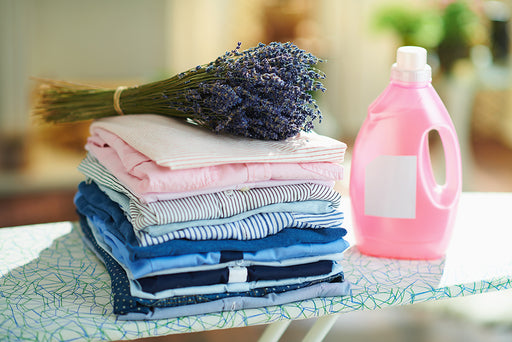
Pressing and ironing your clothes helps them look better. Not only will the iron remove wrinkles, but it can help set creases. This makes your clothing look more sophisticated when you take it out of storage. Plus, the clothing iron can prevent damage from long-term storage. When clothes are folded in the same position for long periods, accidental wrinkles can lead to damage and strained seams can start to wear fabrics down. However, if you iron your clothes first, the seams are more likely to follow their intended material directions and patterns. This helps to reduce strain, prevent misshaping, and lessen wear.
• Ironing and Pressing Will Lead to Better Smelling Clothes
Have you ever noticed that the clothes you iron have a fresher smell? This is because the high temperatures remove bad odors caused by bacteria or small amounts of mildew. There are some great fabric-safe spray bottle infusion products to use with your clothes iron as well. These scented infusions add an extra boost of freshness; the perfect touch just before storage!
What is a Steamer for Pressing Clothes?
Steamers for clothing are a great alternative for people who don't have the tools or space to iron. Clothes steamers work by heating water to make steam. This then loosens the fibers in clothing to get rid of wrinkles and kill moth eggs and bacteria. Steamers work about as well as irons for clothes storage prep.
About Ironing Versus Pressing: What is pressing in clothing terms?
So wait, what's the difference between pressing clothing and ironing clothing? Although these terms are often interchangeable, they don't technically mean the same thing. Ironing removes wrinkles and straightens clothes by sliding a hot iron plate backward and forward over the material. Pressing involves lifting and pulling the iron down in a specific direction to create an effect on the clothes.
For instance, you can iron a garment so it will not lose its shape and its creases will be better defined. A properly ironed item of clothing will help you look more put together. On the other hand, a quick press takes one specific wrinkle or crease out of something using pressure. When learning to sew, pressing is utilized to remove wrinkles in the fabric. With that in mind, when we refer to pressing clothes before storage in this article, we are talking about ironing. Basically, we encourage ironing out wrinkles in garments so that bacteria is killed and clothes stay shaped properly throughout the storage process. Plus, ironing helps to prevent pests like Clothes Moths.
Are there any tips for pressing clothes at home?
If you want to press clothes using an iron or steamer, be sure to get a good one with a nice long cord. Also, be sure that you follow the tag instructions on your clothes carefully to avoid damage. Check that any items you press will be safe if exposed to steam. Ironing and pressing can be very relaxing, so make time to do everything adequately and enjoy yourself! We recommend putting on a great TV show and making a relaxing evening out of the whole process.

Here’s What You Need to Iron Your Clothes Before Storage:
- An ironing board
- An iron
- A spray bottle
- Spray bottle infusion for scent (optional)
How To Safely Store Clothes Long Term: Helpful Tips to Achieve the Best Results
All right, now you know all about how to iron your clothes, what you'll need to store them, and the basics of long-term clothing storage. Now, let's go over some helpful tips to ensure that the entire process goes smoothly for you.
• Always Wash, Dry, and Iron When You Can
We can't emphasize this enough! All of the clothing items that you intend to store should be freshly laundered or dry-cleaned first. Then, if possible, you should iron them out before putting them away into storage containers or garment bags. Don’t think that you can store dirty clothes and then easily wash them months later. This can be a huge mistake. The thing is, if you miss a stain or a mark, getting that stain out six months later can be virtually impossible. Plus, perfume, deodorant, sweat and food stains etc tend to cause permanent issues over time. Not to mention, washing, drying, and ironing your clothes will help to prevent pests like Clothes Moths.
• Pick Out What You Plan to Store With Care
All of us are guilty of storing clothing items that we are never going to wear again. Sometimes, we store something in hopes that we will fit into it later. Other times, we are hoping that fashion trends make their way back around. If you don’t absolutely love the item you are storing, consider selling it to a consignment shop or online.
• Invest in High-Quality Storage Containers
Whether you are moving or simply putting clothes away because they are out of season, having high-quality storage containers can be a game changer. Although vacuum-sealed garment bags are often marketed as the best option for storing textiles, these plastic bags are really only best for artificial fibers and synthetics. Fabrics like wool and silk don't enjoy being vacuum-packed for lengthy periods.
Air-tight plastic bins with lids are a far better alternative. Folding ironed clothes carefully and separating them with acid-free tissue paper is ideal for high-end clothes. Not only will this help your clothing stay safe and dry, but it will also prevent long-term creases and stretching. Plus, plastic crates aren’t prone to puncturing like vacuum bags are and are also easy to open and check as needed. Best of all, these containers can help you stay organized when moving! They can easily be repurposed for years to come.
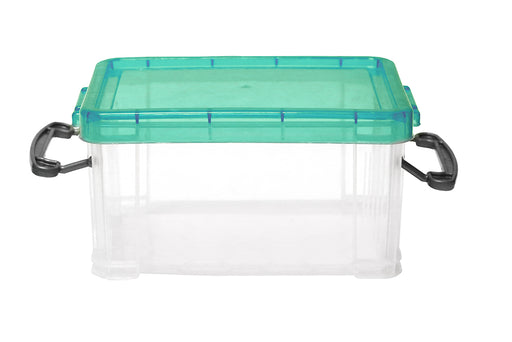
• Pack Everything Carefully
How you store items in each crate will vary depending on what you are stowing away. As a rule of thumb, it is best to store your heaviest items on the bottom and your more delicate garments on top. So, put shoes, winter coats, furs, leathers, suede, and any other heavy woolen garments at the bottom of a crate. Then, add lighter items like cashmere sweaters or crisp cotton shirts in the middle. Fine lingerie and lacey items should go on top. This is just an example to give you an idea of how to pack your crates. As you consolidate items, bear in mind the weight and bulk of each article. Consider how hard it will press against the garments below.
• Find Safe Places for Storage
In some cases, attics are great places to store clothing. In other situations, attics are drafty and poorly insulated, making them terrible storage locations. The same goes for garages and certain storage units. It will depend on how cool and dry someplace is. Clothing should always be stored in the driest, coolest place possible. The cooler and drier an area is, the better your clothes will fare in the long term! Always avoid areas prone to mildew, severe temperature fluctuations, sunlight, pests, or moisture.
Quick Tips for Protecting Your Clothes From Moths During Storage
What about moths, silverfish, and other clothes pests? Well, we are glad you brought that up! After all, no one wants their perfectly pressed and folded clothes to get eaten by insects. To add insult to injury, Clothes Moths (or, more precisely, their larvae) love to infest uninhabited areas full of fancy natural fabrics. In fact, Clothes Moths absolutely love fur, feathers, leather, and silk. With that in mind, here are some ways to keep moths (and certain other pests) far away from your clothing while it’s in storage.
• Check Your Clothes and Storage Locations Before Packing Things Away
Even if you have washed, dried, and pressed your clothing, you should still check for signs of moths before packing everything. This is especially true if you are storing second-hand items or anything that has never been worn before. After all, moths love clothes that sit unattended. Also, check that your intended storage location is moth-free.
If you are worried that moths have laid eggs in your clothing, put everything into a plastic bag and freeze it for 72 hours. That will stop any infestation in its tracks! In fact, any items of clothing that cannot be washed or dry-cleaned should be frozen for 72 hours. This is a great way to give you peace of mind without costing you much money at all.
• Seal Everything Well
If you are storing clothes for more than a month, take care to ensure that everything is sealed away safely. Vacuum bags are good for certain garments while airtight plastic crates or bins can be great for other storage applications, just make sure your clothes are completely dry before storing.
Avoid using fabric or wicker containers, which insect larvae can easily get through. If the plastic bins or clothing totes you have chosen aren't exactly airtight, you may want to consider using tape to seal up the open gaps.
• Hang Pheromone Clothes Moth Traps - Distanced From Natural Deterrents
Natural deterrents aren't the only (or best) way of keeping Clothes Moths away from your garments whilst in storage.
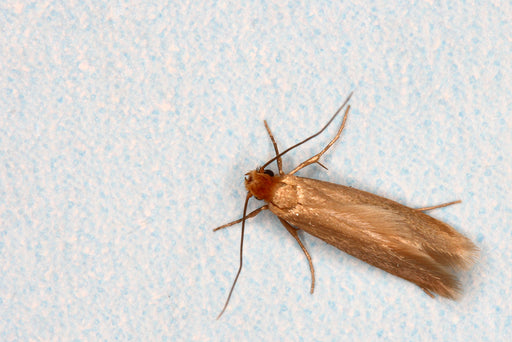
Cedar can smell great but the moths hate it so cedar shelves, and cedar chips can be useful. Herbal moth-deterrent sachets filled with clove, rosemary, thyme, lavender, and mint can also be used wisely.
For complete peace of mind position pheromone clothes moth traps in areas where you see moths or suspect moths are present. The traps will attract and CATCH the adult flying male clothes moths.
If using natural repellents such as herbal sachets or cedar blocks, make sure these aren't placed or hung in close proximity to your pheromone clothes moth traps.
FAQs on Pressing Clothes and Keeping Your Best Garments Fresh
Here are a few final FAQs to help you as you embark on your pressing, ironing, and clothing storage journey!
Should you use a pressing iron for clothes before storing them?
Yes, this step destroys bacteria, prevents odors, and can even kill hidden moth eggs. Plus, it makes your clothes look better.
Does steaming clothes kill moths?
Again, the answer is yes. Steam is a great way to kill moths in the egg and larval stages. However, you may want to consider freezing items for 72 hours to kill any unwanted insects before storing your clothes if you suspect that Clothes Moths have paid you a visit. A trip to the laundromat or dry cleaner may also be in order.
Does ironing kill moth eggs?
So does steam ironing kill moth larvae and eggs? Yes, steam ironing can kill moth eggs and larvae. However, you should first try to clean your clothes in the washer or at the dry cleaners, or you could wind up with some very unnerving stains. High-end clothes that can not be washed conventionally can usually be dry cleaned.
What’s the difference between pressing vs ironing?
Pressing, steaming, and ironing are all ways to remove creases from fabrics. Ironing involves moving a clothes iron back and forth over the fabric to get all of the wrinkles out. Ironing can also involve steaming and spraying if you have a spray bottle on hand.
Pressing implicates maneuvering a pressing tool or ironing plate in one specific area to get a specific crease out, or, using a clothing press. Finally, steam pressing concerns using steam to release creases and wrinkles via hot moisture. All of these options are good if you are preparing garments for long-term storage.
About MothPrevention
MothPrevention® speak to customers every day about their clothes moth issues - clothes moths are a species that are ever increasing and that can cause significant damage to clothes, carpets and other home textiles.
To date, we’ve helped over 250,000 customers deal with their moth problems. We have developed professional grade solutions including proprietary pheromones and trap design, not available from anybody else in the USA.





